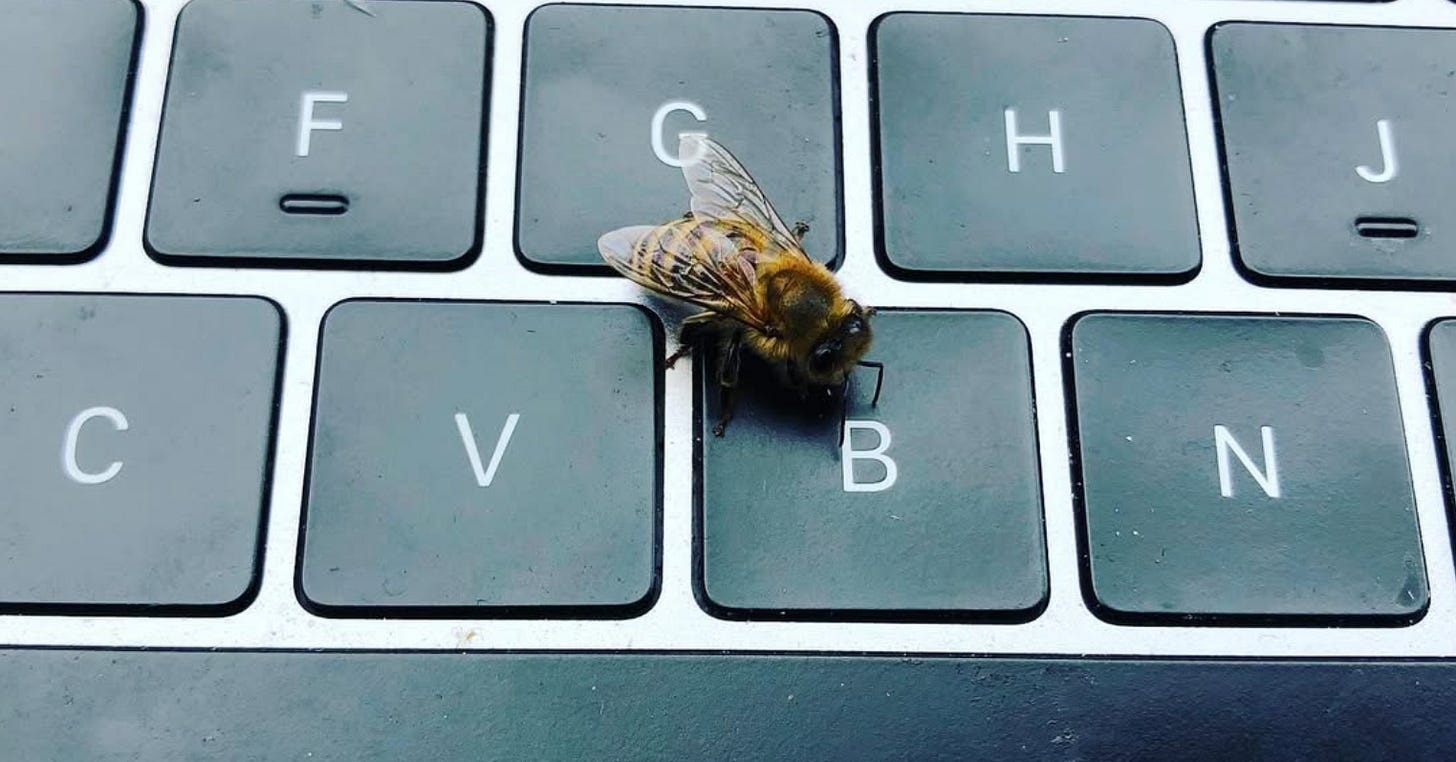How I Motivate Myself to Write
The best tool I’ve found for getting words on the page
More than a decade ago, when I interviewed Terry Tempest Williams for Guernica, she told me when she sits down to write, she lights a candle. This way, she said, something is happening, even if it isn’t happening on the page. After our conversation, I adopted this ritual, though it has taken on a different meaning for me.
In the spring of 2020, when everyone was turning to diversions—knitting, filling coloring books, baking creations inspired by the Great British Baking Show—my husband and I tried a new hobby as well. More accurately, a beekeeper friend foisted a new hobby upon us, gifting us 30 thousand bees, which we transported from the Columbia River Gorge to Portland in the back of our Subaru like a loaded bomb.
In the following months, my husband and I learned more about honeybees than we’d ever cared to. Each morning, my husband pulled a chair in front of the hive, sipped his coffee, and watched the activity with a pair of binoculars. He walked the neighborhood every day, returning with reports that the honeybees gravitated to lavender, to clover, to hawthorn blossoms. Meanwhile, I read books about honeybees. I learned that the life cycle of the western honeybee (Apis mellifera) begins when an egg hatches, and that this little blip of a bee needs three weeks to plump from larval-squirm to workforce-ready. Meanwhile, a queen larva gobbles royal jelly for two weeks, fattening to an imposing, imperial size. She then dashes off for a rendezvous with as many male bees as she can bewitch. This lasts anywhere from five to thirty minutes. She then spends the rest of her life—up to five years for some queens—laying eggs. Day in, day out—year after year—she lays egg after egg after egg.
While the queen settles into her fate as perpetual baby maker, between 20 to 80 thousand worker bees tidy the hive, build up the hive, tend to the queen, feed the honeybee babies, defend the honey stores from invaders, waggle dance, and dash around town kissing flowers then hauling saddlebags of pollen back to the colony. It is an astonishing amount of constant, coordinated activity, and pausing to consider it all is enough to make one’s mind spin.
Pausing to consider all of this is precisely what I do each time I light a beeswax candle when I sit down to write, for it is because of their work that this candle exists.
Throughout my life, I’ve written for a lot of reasons—to feed some inner hunger, to try to tell a good story, to put into words what I can’t seem to say out loud. But in the last few years, I’ve been writing for the bees. I write because if I do not write, then all the work that went into making this candle—now melting in a steady drip beside me—evaporates into the air without me fulfilling my end of the bargain. My writing feels like an offering, or maybe like an exchange between myself and the bees who busily do their part. I feel I must do mine. In my work, I write a lot about the natural world, my small contribution to the repair work needed to right ecological systems that are wildly off balance.
I write for the queen, who only feels the embrace of the outside world for five to thirty minutes before dutifully laying hundreds (and sometimes thousands) of eggs each day for the rest of life. I write for the tens of thousands of worker bees who diligently tidy and nurse and build. I write for the foraging bees who risk life and wing to pollinate plants in our garden and neighborhood, who get caught in spider webs or killed by wasps or swallowed by birds. I write for every member of the colony tirelessly tending to tasks that preserve the collective wellbeing of the hive.
Writing with a candle beside me gives me an urgency no other ritual does. Because to write is to have faith that the little letters I’m stringing into words and then threading into sentences might one day produce something that becomes a lit flame. I’ve found no better teachers than honeybees for learning how to alchemize patience and diligence into something that can both feed me and light my way.




Very nice story Devon